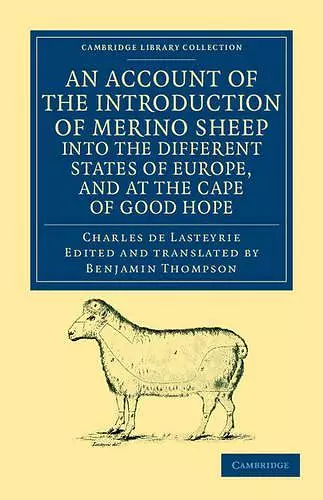An Account of the Introduction of Merino Sheep into the Different States of Europe, and at the Cape of Good Hope
Charles de Lasteyrie author Benjamin Thompson editor
Format:Paperback
Publisher:Cambridge University Press
Published:20th Oct '11
Currently unavailable, and unfortunately no date known when it will be back

1810 translation of an 1802 French work describing breeding and husbandry practices, yields and prices of superfine wool around Europe.
This translation of an 1802 French work describing the benefits of farming Merino sheep was published in 1810 by the English playwright Benjamin Thompson (1775/6–1816). It documents the successful introduction of Merinos around Europe after Spain relaxed its export restrictions, noting their adaptability to different climates and farming practices.During the eighteenth century, Spain relaxed its stringent export restrictions on Merino sheep, whose notably fine fleeces had long ensured the reputation of the Spanish woollen industry. Merinos were introduced around Europe and in 1792 Sir Joseph Banks, President of the Royal Society, established the first British flock in George III's gardens at Kew. This book, describing the qualities and adaptability of the Merino, was originally published in Paris in 1802 by the French agriculturalist and aristocrat C. P. Lasteyrie (1759–1849). It appeared in 1810 in this English translation by Benjamin Thompson (1775/6–1816), a professional playwright and translator, who was also an unsuccessful agricultural speculator and, briefly, secretary to the Merino Society. Documenting the spread of the Merino, regional variations in breeding regulations and husbandry practices, and wool yields, prices and taxation, this promotional treatise sheds light on the history of both agriculture and commodity trading.
ISBN: 9781108039154
Dimensions: 216mm x 140mm x 15mm
Weight: 340g
260 pages